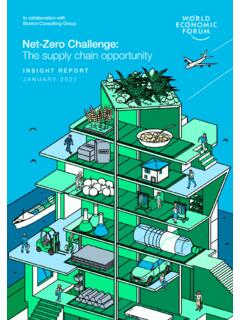Transcription of How much energy could be saved by making small changes …
1 How much energy could be saved by making small changes to everyday household behaviours? Jason Palmer, Nicola Terry, Peter Pope Cambridge Architectural Research The views expressed in this report are those of the authors, not necessarily those of the Department of energy and Climate Change (nor do they reflect Government Policy). November 2012 Cambridge Architectural Research, November 2012 With thanks to Professor Robert Lowe from the energy Institute at University College London, who reviewed a draft of this report. 3 How much energy could be saved by making small changes to everyday household behaviours?
2 Table of Contents Executive Summary .. 4 Introduction .. 6 Approach .. 6 Example of using the Model .. 8 Example of other methods .. 9 Caveats .. 10 Uncertainty .. 11 Uncertainty and distributions .. 12 Ranked estimates .. 15 Triangulating estimates of largest savings .. 26 Turn thermostat down by 1 C from 19 to 18 C .. 26 Delay start of heating from October to November .. 27 Use radiator valves to turn off heating in unused rooms .. 28 Install water efficient shower head and use twice every day .. 28 Appendix: CAR s experiments .. 30 4 Executive Summary Cambridge Architectural Research (CAR) was commissioned by The Department for energy and Climate Change (DECC) to estimate the potential energy savings that could be achieved by households adopting everyday behaviours.
3 Some of the 45 behaviours examined describe a change in the way people use energy in their homes ( turn the thermostat down ), while others describe a technical upgrade ( insulate hot water tank ), and a small number describe both a technical upgrade and a change in behaviour ( install water efficient shower head and use twice every day ). The average savings per household were quantified for each of the behaviours , and CAR made rough estimates of the number of households that could potentially adopt them. To provide indicative estimates of total savings if households adopt the behaviours, we factored up the savings very roughly, and in a way that is simple for DECC to change if further evidence becomes available.
4 A tiered approach was used to estimating energy savings. Tier 1: Where possible, use the Cambridge Housing Model1 to estimate thermal energy savings Tier 2: (Where model was not suitable) Use robust data from CAR s library of published reports and papers about energy behaviours Tier 3: (Where there was limited robust data available) Use published data in combination with expert judgement to formulate an estimate Tier 4: (Where there was no robust published data for the behaviour) Use expert judgement, our own experiments, and CAR s experience in working on household energy behaviours to formulate an estimate. All the estimates, the assumptions and sources underpinning the estimates are clearly described in the Excel spreadsheet that accompanies this report2.
5 CAR expects DECC to refine and build on this spreadsheet as more data becomes available. We recommend that readers use the spreadsheet alongside this report because the assumptions, sources and calculations are not duplicated here. This work is not intended to give precise or definitive estimates of energy savings. We have drawn up high , low , and most likely estimates of the energy saving from 1 This is a bottom-up model that estimates energy consumption in the 16,150 dwellings surveyed in the English Housing Survey (the most robust and comprehensive survey of UK homes).
6 The Model uses a building physics engine built around SAP, the Standard Assessment Procedure. 2 This report is available at: 5 adopting narrowly-defined behaviours, but there is at least as much uncertainty about the number of households that could be persuaded to adopt the behaviours, and exactly how they do so. We have constructed a simple ranking of the savings from behaviour change if they were adopted across Great Britain s whole housing stock, which indicated that the total saving from changing a single behaviour across all homes could be from 49 TWh to zero (no saving). This is just to give an indication of the size of the potential, because actual savings would depend how many households change their behaviour.
7 The top six energy -saving behaviours (over a year) to emerge from this work were: 1. Turn thermostat down by 2 degrees from 20 C to 18 C (33 TWh) 2. Turn thermostat down by 1 degree from 19 C to 18 C (16 TWh) 3. Delay start of heating from October to November (11 TWh) 4. Wear a thick jumper at home in the heating season (6 TWh) 5. Replace standard shower head with a water efficient shower head and use twice every day (5 TWh) 6. Use radiator valves to turn off heating in unused rooms (4 TWh) The ranking may surprise some readers, because behaviours commonly thought significant are some way down the list. Only filling the kettle to the required level , for example, may only save 1 TWh, while Washing clothes at 40 degrees or less may only save TWh.
8 Given that the six behaviours above are those expected to deliver biggest savings, they merit additional scrutiny, so we have also used different approaches to triangulate or validate these savings estimates. We have also carried out limited sensitivity and uncertainty analysis on these estimates. This work is described in the main body of this report, from page 16. 6 Introduction Nearly a third of the UK s greenhouse gas emissions come from the domestic sector3. It will be almost impossible to meet our national target of cutting GHG emissions by 80% without reducing energy use in homes. DECC needs to understand more about how to encourage energy -saving behaviours in the home so it can develop policy ideas that will support and accelerate the move to a low carbon economy.
9 This work is part of a wider programme of work aimed at understanding household energy use. The Department already has a reasonable understanding of energy efficiency decisions in the home ( deciding to install insulation), but there is still uncertainty about habitual behaviours that affect energy use ( heating and hot water controls, leaving lights and appliances on, how cooking equipment and cooling equipment is used, or how people charge electronic devices). The Department s Customer Insight Team developed a list of 45 individual behaviours thought to save energy , but where there is uncertainty about how much energy households could save.
10 The Department appointed CAR to estimate how much energy these target behaviours could save. CAR has estimated the energy savings from each of the behaviours specified, clearly listing all of the assumptions that lie behind our estimates, and where possible tying the estimates to empirical data. In some cases there was robust evidence on which to base our estimates, but in other cases the evidence base was much more limited. Where no other information was available, CAR carried out our own small -scale experiments to quantify likely savings (see Appendix, page 22). This work is intended to be refined over time as the evidence base develops it is by no means a finished product.

















